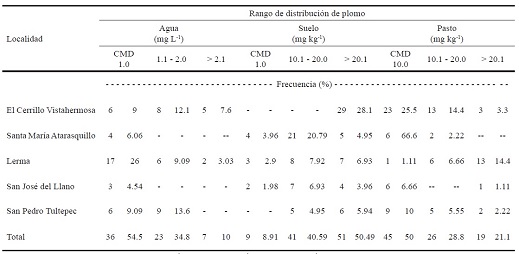Lead levels in water, soil and grass from Valle de Lerma, State of Mexico municipalities, dedicated to livestock
DOI:
https://doi.org/10.28940/terra.v40i0.949Keywords:
lead levels in soil, grass, waterAbstract
In the State of Mexico, the towns near the Lerma River stand out for their industrial development, which leads to the contamination of water and soil, af fecting livestock production in the area. Based on this approach, the objective of this research work is to determine the levels of Lead (Pb) in water (mg L-1), soil and grass (mg Kg-1), for the municipalities with basins of the Lerma River, State of Mexico. The highest average levels of Pb in water were observed for El Cerrillo Vistahermosa (1.5 ± 0.4), followed by Lerma (1.0 ± 0.2) and San Pedro Tultepec (1.0 ± 0.3). The average level of Pb in water is within the permissible concentration range for water for agricultural use; however, the environmental levels are high, ref lecting an important bioaccumulation in the soil, with higher values in San Pedro Tultepec (40.7 ± 18.0) and therefore in the pasture. Lerma was the municipality with the highest concentration (38.2 ± 6.9), which makes it a source of risk for animal and human health. The localities bordering the Lerma River show notable differences in Pb levels, with higher concentrations being observed in areas with greater permanence of water in El Cerrillo Vistahermosa and San Pedro Tultepec. Finally, it was found that the Pb obtained in water, soil and grass are above the maximum permissible range in more than 50% of the samples, ref lecting an important emission of this element to the environment.
Downloads
Publication Facts
Reviewer profiles N/A
Author statements
- Academic society
- Terra Latinoamericana
- Publisher
- Mexican Society of Soil Science, C.A.

















